"A CHRISTMAS ROBIN" by M. Morgan Warren
I love the English robin, the little red-breasted bird so closely associated with Christmas that it's often called the Christmas robin. This colorful creature is a traditional Christmas symbol in the United Kingdom, often depicted on their festive greetings cards and Christmas gift wrapping. They also use robin decorations to trim their Christmas trees and their Christmas cakes or chocolate logs. It's hardly surprising that they cherish this pretty, cheerful wee bird as part of their Christmas festivities because he is so colorful and most other birds have migrated to warmer climates. And during the long bleak winters it is uplifting to hear the chirpy song of the festive robin.
"ROBINS IN THE SNOW" card from Past Times
Robins live through out Europe (except the far north) and western Siberia. An increased number of robins are noticed in the UK during the winter months as robins in colder climates move to warmer wintering gathering grounds during the autumn.
Robins who live in close proximity to people can become rather tame, especially towards avid gardeners. They have learned to take advantages of unearthed worms caused from gardeners digging and turning the soil. Some cheeky robins may even perch on the gardening spade.
I have several English blogging friends who have posted about robins keeping them company as they go about their gardening chores. My friends are always so heartened by these visits!
"CHRISTMAS ROBIN AND FRIENDS" by Harry Bright
Male robins are very territorial and sing to proclaim their territory. What sound like a cheerful winter song to human listeners is actually a warning of occupation to other robins in the area. Robins will fiercely fight to defend their territory.
Chicks are not born with the trademark vibrant red breast feathers. They shed their chick feathers to make way for their splash of red on their breasts.
Robins commonly live up to the ripe old age of 5 years, which is something to sing about. The oldest robin recorded in England was 8 year, 4 months old.
"THE KINDLY ROBIN", Victorian Christmas Card
It is the English robin which is the bird closely associated with Christmas. While both the American robin and the English robin are both called Robin Redbreast, they are different birds. The North American robin, Turdus migratorious, is a thrush. Its coloration is actually a bright orange, which is spread not only across its breast but its underparts.
The coloration on the English or European robin - Erithacus rebecua - by contrast, is confined to the upper breast. It was formerly classed as a member of the thrush family, but is now considered to be an Old World flycatcher.
"ROBIN AND HOLLY" by Ellaine Hush
Although extremely familiar with the American robin with its rusty orange front, I have never seen an English robin. In photographs, the feathers of its upper breast look brown or even rust colored. As you can see by the beautiful paintings I share on this post, artists interpret the color in shades of red, red orange and brown.
"A CHRISTMAS ROBIN AMIDST 'MacINNES' HOLLY"
(The plant badge of the Clan MacInnes)
The English robin is connected with a legend of Christ's birth. On that first Christmas, it is said, the night was wrapped in a bitter chill. The small fire in the stable was nearly out, and the Mother Mary worried that her baby would be cold. She turned to the animals about her and asked them for help.
"Could you blow on the embers," she asked the ox, "so the fire might continue to keep my son warm?" But the ox lay sound asleep on the stable floor and did not hear her. Next, Mary asked the donkey to breathe life back into the fire, but the sleeping donkey did not hear Mary either. Nor did the horse or sheep. She wondered what to do.
Suddenly, Mary heard a fluttering of little wings. Looking up, she saw a plain, brown-colored little robin fly into the stall. This robin had heard Mary calling to the animals and had come to help her himself. He went over to the dying fire and flapped his wings hard.
His wings were like little bellows, huffing and puffing air onto the embers, until they glowed bright red again. He continued to fan the fire, singing all the while, until the ashes began to kindle.
With his beak, the robin picked up some fresh, dry sticks and tossed them into the fire. As he did, a flame suddenly burst forth and burned the little bird's breast a bright red. But the robin simply continued to fan the fire until it crackled brightly and warmed the entire stable. The Baby Jesus slept happily.
Mary thanked and praised the robin for all he had done. She looked tenderly at his red breast, burned by the flame, and said "From now on, let your red breast be a blessed reminder of your noble deed."
And to this day, the robin's red breast covers his humble heart.
(From "A Christmas Stocking" by Louise Betts Egan.)
"CHURCH ROBIN" (from Quarriers Cards)
Here is a poem that tells the same tale:
~ The Legend of the Christmas Robin ~
"Legend tells how a robin,
On the night of the first Nel
Braved the frosty winter night
So the baby might sleep well.
Throughout the night, the small grey wings
Did flutter for all their worth
And fanned the fire that warmed the Christ
His first night here on Earth.
In the heat of stirring the lonely fire
The shepherds have it said
The Robin wears with honor
A breast of Christmas Red."
Poem and painting copyright
From "Robin Redbreast" by William Allingham:
"The fireside for the Cricket,
The wheat stack for the Mouse,
When trembling night-winds whistle
And moan all round the house;
The frosty ways like iron,
The branches plumed with snow, --
Alas! in Winter, dead and dark,
Where can poor Robin go?
Robin, Robin Redbreast,
O Robin dear!
And a crumb of bread for Robin,
His little heart to cheer."
As you can see by the paintings, robins are often associated with holly, or ivy, or both. They are also often associated with red English postboxes, as shown in the cad above. The Robin was officially declared Britain's national bird in December 1960 in The Times.
The Anglo-Saxon name for the Robin was Ruddock, but by the Middle Ages Redbreast was used. In the fifteenth or sixteenth centuries the pet name Robin Redbreast came into use. The use of the plain name of robin is fairly recent, gaining official acceptance by the British Ornithologists’ Union in 1952.
"ROBIN REDBREAST" copyright Valerie Greeley
(Check out this English artist's blog, "Acorn Moon",
(Print available as boxed cards)
According to the British Trust for Ornithology, robins became a Christmas symbol because they looked like letter carriers… or letter carriers looked like them. The birds had been called redbreasts for hundreds of years before British postmen started wearing red coats in the mid-1800s and earned the same nickname. A robin first appeared on a Christmas card in the 1860s. The bird was depicted carrying an envelope. The illustration of robins delivering holiday messages cemented the association and a Christmas bird was born.
"THE CHRISTMAS MORNING POST"
(English Postcard by Tuck and Sons)
\However, says the BTO, there may have been a Christmas connection much longer than this, and in different parts of the world. Earnest Ingersoll wrote that Northern Europeans looked for the robin at Christmas because it stayed through the winter, and that “in Southern Germany the custom is to put grain on a roof for the redbreasts, who come trustfully about houses at that season”.
Adds the BTO: "As the Christmas bird par excellence it seems appropriate to record the robin which managed to imbibe too much of the Christmas spirit. Some seventy years ago Margaret Holden wrote of the household robin which, having eaten its share of the plum pudding and brandy sauce, fell off the chair back on which it was resting. Left in a safe place to sleep off the effects, it never touched another drop."
"ROBIN ON HOLLY" by Derek Rowson
http://www.bto.org/news/news2006/nov-dec/robin_for_christmas.htm.
"WINTER ROBIN" (from My Charity Cards)
Robins are often known to build nests in clay gardening pots. In fact, robins have been recorded building nests in lots of odd places, including kettles, teapots, pieces of machinery, barbecues, bicycle handle bars, bristles on upturned brooms, watering cans, hats and gardeners’ coat pockets (fortunately not while they're being worn).
Jill Bonner Cards
Although popular with all, children in particular love this cheerful and quite tame little bird. For them, a Christmas robin is the first sign of the holiday season, with the promise of good things to come!
For all kinds of merchandise related to The Christmas Robin (cards, mugs, prints, soaps), visit this site:




















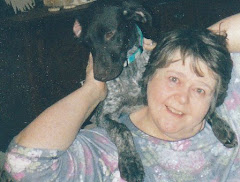



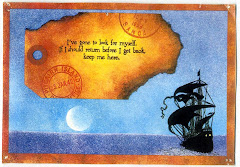















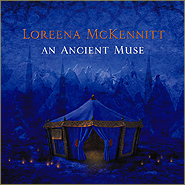

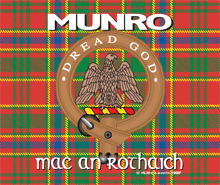
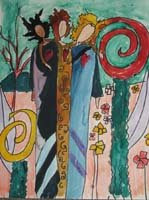

10 comments:
You've found some lovely illustrations of our lovely little robin. I have two of them regularly on the terrace outside the french windows and, as you say, they are conatant companions when I'm gardening. A really nice seasonal post.
Great posts and some great pictures. I had a little Robin. One day there was a huge commotion outdoors; the Robins were screeching. W went out and a little one was on the ground. When I went out to retrieve him, the parents started swooping down at me. I picked him up and ran. I couldn't put him back, they wouldn't let me, so we took him to the vet. Turns out he was deformed. One leg was malformed and this is why they tossed him from the nest. I bought a cage since he would never fly and took care of him for a little over a year before he crossed The Rainbow Bridge. He knew me and would always get so excited to see me.
Mary
Another wonderful post, Julie. I love both the art and the words you use to tell a story. I am intrigued by wild birds that enjoy the company of gardeners and will even nest in coat pockets!
Having grown up in England, I am familiar with this lovely little bird. I always look forawrd to getting Christmas cards from the UK
but especially love them when they have this little bird on them, as they often do. Thanks for a lovely post Julie..!
xx
I wanted to thank you for posting this. Since my name is Robin, I LOVED it. I had heard of the Legend, but couldn't find much on it. The graphics were beautiful also, thanks again!
Hi Julie!
I had "googled" English Robin-images and low and behold, your blog....I missed this post in December as we were traveling.
With the snow we have this weekend, I am thinking of images of birds and snow.The Engish Robin is so colorful and cute!
I have never heard of the Christmas Robin before. I am working on a production of the musical version of The Secret Garden and did a bit of research that led me to you. Most helpful and enjoyable thank you
robdaltonactor.net
A Robin always can tell a story, depending on how you listen, its has been with us for my eons and should be more recognized as our bird. It is also the unofficial bird of England.
Just thought I would give you my families version of the Robin's red breast.
Christ was on the cross an a robin pulled a thorn from his forehead, Christ's blood spilled onto the bird chest. So the Robin has been red ever since.
Room for research to the nursery rhyme "who killed cock robin?"
This is so old it's lost in the mists of time
Post a Comment